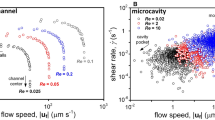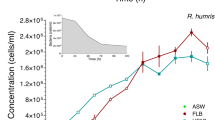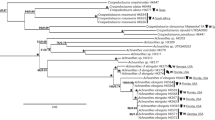Abstract
WE have seen groups of small (4–5 mm long) grey flies belonging to the species Lipochaeta slossonae Coquillett, 1896, standing, shaking and apparently feeding, or flying for short distances on stretches of wet sandy beach in La Jolla, California and San Felipe, Mexico. When undisturbed, they walked sideways or stood and shook their bodies, diagonally forward and downward, and backwards and upwards, at an estimated frequency of 5 s−1. We guessed that they were fluidising the wet sand under their feet and thereby loosening some of the interstitial microflora which could then be sucked up as a kind of soup. This was confirmed by laboratory examination of the guts of several specimens, which contained the remains of large numbers of cells of dinoflagellates and diatoms. (The species of dinoflagellates were unfortunately unidentifiable since there were no cell wall remains, but they probably belonged to the genus Amphidinium, which comprises some of the commonest unarmoured interstitial dinoflagellates on this beach. The diatom species, however, could be readily identified by their silica walls. There were at least 10 genera, all typical of the marine interstitial community, including various species of Navicula, Nitzschia, Pinnularia and Amphora.)
This is a preview of subscription content, access via your institution
Access options
Subscribe to this journal
Receive 51 print issues and online access
$199.00 per year
only $3.90 per issue
Buy this article
- Purchase on SpringerLink
- Instant access to full article PDF
Prices may be subject to local taxes which are calculated during checkout
Similar content being viewed by others
References
Cole, F. R., The Flies of Western North America, 392 and 404 (University of California Press, 1969).
Usinger, R. L., Aquatic Insects of California, 470 (University of California Press, 1971).
Dahl, R. G., Opuscula Entomol. Suppl. 25, 1–225 (1959).
Deonier, D. L., Ohio J. Sci., 72(1), 22–29 (1972).
Brauns, A., Zool. Anzeiger, 126, 273–285 (1939).
Deonier, D. L., Smithsonian Contr. Zool., 68, 21 (1971).
Silas, E. G., and Sankarankuttry, C., Proc. Symp. Crustacea India, ser. 2, part 3, 1008–1025 (1967).
Author information
Authors and Affiliations
Rights and permissions
About this article
Cite this article
CHENG, L., LEWIN, R. Fluidisation as a feeding mechanism in beach flies. Nature 250, 167–168 (1974). https://doi.org/10.1038/250167a0
Received:
Revised:
Issue date:
DOI: https://doi.org/10.1038/250167a0



